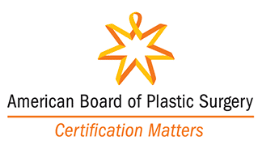New rules from the FDA are making sunscreen labels more informative, with less misleading information. These mandates are now in effect, with obvious safety benefits for consumers:
1.) The term “sunblock” has now been banned as it is been proven impossible for any of these substances to block all of the sun’s UV rays; sunscreen is now the only acceptable terminology.
2.) “Waterproof” is also banned, interchanged for “water-resistant.” Companies must also indicate a set time for safe re-application of sunscreen.
3.) Companies must now pass a rigorous set of tests to prove their sunscreen is in fact “broad spectrum,” protecting an individual from both UVA and UVB rays.
4.) Any sunscreen less than SPF 15 must now carry a warning label indicating skin cancer and skin aging alerts. Also, it must be clearly marked that sunscreen does not prevent skin cancer or skin aging as a result of UV exposure in that it only prevents sun burn.
5.) The FDA would also like consumers to know that there is no evidence that sunscreens with an SPF rating above 50 offer any additional protection.
The American Academy of Dermatology advises consumers to sunscreen with broad spectrum UVA/UVB protection, SPF 30 or higher, water-resistant for 40-80 minutes to reduce one’s risk of skin cancer and early aging.
At Centre for Aesthetic and Reconstructive Surgery we also recommend a basic anti-aging skin care regimen in addition to the use of high-quality sunscreen. We endorse the use of the Environ line of skin care products.
Wise sunscreen use:
a.) Apply it before you go out.
b.) Ensure you apply enough, and apply frequently.
c.) Reapply after swimming and heavy sweating using the time guide on the label.
d.) If you do not get in the water or sweat, you should still reapply every 2 hours.
Even the best sunscreen cannot completely protect you from the sun’s harmful UV rays. Other methods to protect yourself from skin cancer, sunburn, and early aging skin include: wearing clothing made from tightly woven fabrics or fabrics that absorb UVA/UVB rays, avoiding direct sun exposure from 10am – 4pm, wearing a wide-brimmed hat to keep the sun off your face, staying in the shade, avoiding direct reflections of the sun (e.g. water, sand, snow, etc.), avoiding sun exposure when the UV index exceeds 2, examining your skin regularly for new or changing moles.
Consult your physician with any concerns you may have promptly.
Full-text article can be found here.


